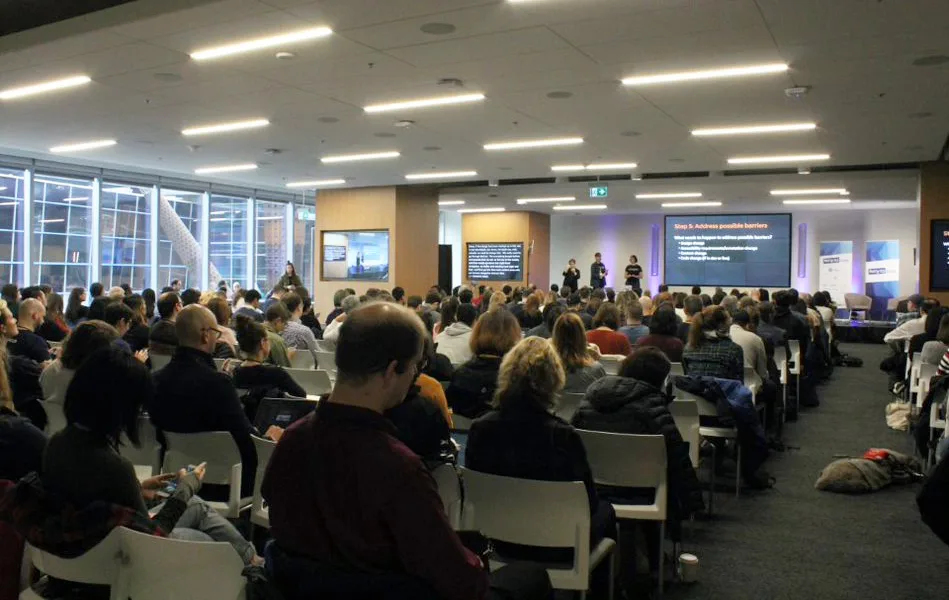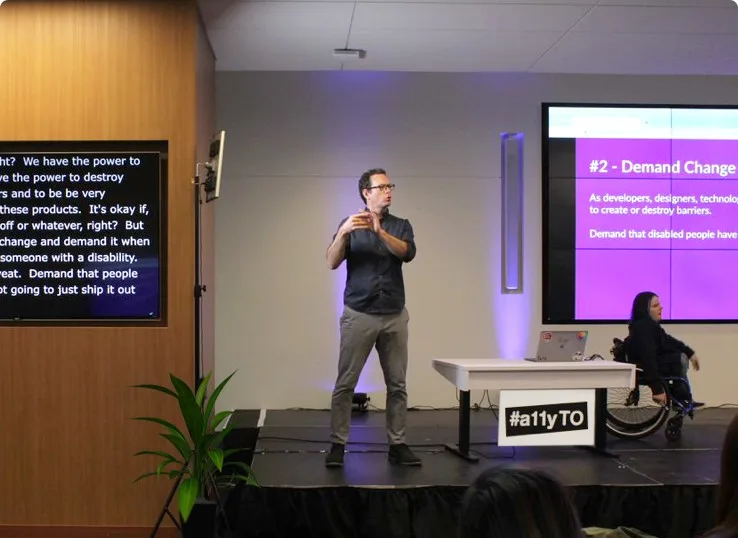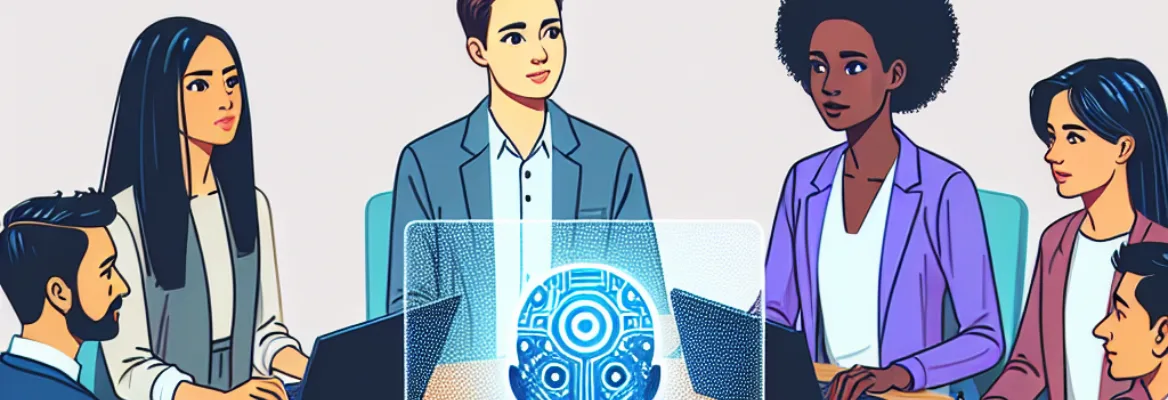How to Plan an Accessibility Conference
Culture · Dec 18, 2019
Planning and designing an accessibility conference is the same as planning any other conference - sort of. There may be specialized logistics to consider to make the event inclusive to people with disabilities, but is that really any different from other events? Let’s break it down.
Oskar Westin is a Senior Digital Accessibility Strategy Manager at TELUS. He got involved with an accessibility meetup group in Toronto (#a11yTO) when he was learning about accessibility for a large Toronto-based transit organization. He started attending the Meetups simply because they were being held in his office at the time. Eventually, he was volunteering at meetups and the annual #a11yTO Camp. Then in 2017, he and fellow volunteer, Billy Gregory organized the first #a11yTO Conf, a two-day conference designed around digital accessibility.
"A11y is a numeronym (a number-based word used to form an abbreviation). 11 represents the eleven letters between the A and the Y in the word accessibility"
When Oskar started to learn about accessibility in 2008, he had very little experience with the topic, but it turns out he did have personal experience with disability. At age four, Oskar was in a serious car accident. His only memory from the aftermath was the smell of rubber from the anesthetic gas mask used before surgeries.
A right-side skull fracture injury resulted in permanent left peripheral sight loss in both eyes. This affected his hand-eye coordination and depth perception. Growing up, Oskar didn’t consider the impact of his disability, how it affected the people around him, or even that others might be experiencing things differently from him. Learning about digital accessibility changed that perception.
Therein lies the primary consideration when designing an accessibility conference: putting yourself in other people’s shoes to be able to see things from their perspective--a perspective which may be vastly different from your own. But then isn’t this the main driver behind all good design? To assume that the user is approaching what you put in front of them in only one way would be incredibly short-sighted.

Here are some of the things Oskar and team consider when designing any large-scale #a11yTO event:
That directions to the conference space are clearly marked
That everyone can fit comfortably in the event space
That the presenters’, volunteers’, and attendees’ time is respected
That everyone can hear the presenters
That anyone can ask for help if they need it
That a quiet space is available for speakers, volunteers, and attendees
That people feel safe
Hold on, that isn’t very different from the mandate of any conference. Bingo. The intention behind designing experiences for people with disabilities are not different from designing for anyone else. Sure, an event for people with disabilities should have closed captioning and American Sign Language interpreters, but why wouldn’t this be helpful at other conferences as well? It certainly makes information easier to consume, not to mention, more interesting. Captions can be read by anyone and the energy of the sign language interpreters only adds to the nuances of the event.
Another interesting approach is that the conference is designed as a single track event, meaning that only one speaker presents at one time. This allows everyone to share in the same experience without having to rush between rooms or agonize over which talks to miss. The event also books a quiet room where speakers and volunteers can go to collect their thoughts between sessions.
The 2019 #a11yTO conference was extremely well-attended and enjoyed by all, as summarized nicely in this blog post by speaker and attendee, Lainey Feingold. Obviously, a ton of energy and thought was put into making the conference run smoothly. But was it any more energy and thought that would have gone into planning any other conference? One might argue no - that it was simply energy and thought put into the right things to ensure that the conference was inclusive and accessible to all. Which is exactly how we strive to approach all design initiatives at TELUS Digital; it’s knowing that accessible design means better design for all.



